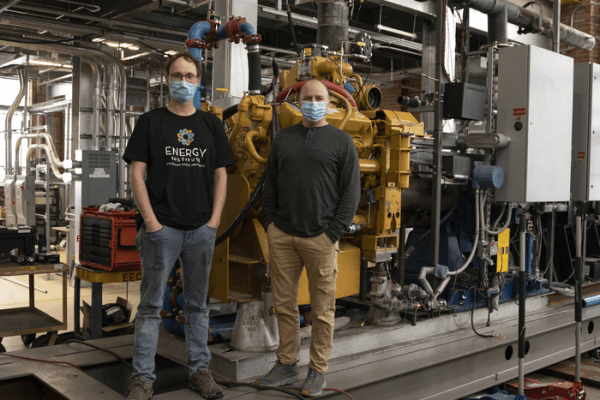Colorado State University leaders in natural gas engine design and optimization are among a handful of teams nationwide innovating new technologies for reducing greenhouse gas emissions in oil, gas and coal industries.
Researchers led by Daniel Olsen, professor in the Department of Mechanical Engineering, and Bret Windom, associate professor in the same department, are among 12 teams receiving a total of $35 million in research funding from the Department of Energy’s Advanced Research Projects Agency-Energy (ARPA-E). The funding program supports research in reducing emissions of methane, a greenhouse gas 25 times more potent than carbon dioxide. The projects support the U.S. Methane Emissions Reduction Action Plan, announced at the 2021 United Nations Climate Change Conference.
The CSU researchers received a $1.5 million grant for work to reduce emissions from four-stroke, lean-burn natural gas engines typically found at compressor stations between natural gas wellheads and large interstate pipelines that carry the gas across long distances. In particular, they are seeking to design a system to reduce methane normally emitted from the engine’s crankcase.
The crankcase is the part of the engine where the crankshaft spins. Small amounts of gas from the engine cylinder – fuel, air, and combustion products – can leak past the piston rings and into the crankcase. Typically, these gases, including methane, build up in the crankcase and are vented into the atmosphere. The venting is part of the engine’s design, preserving its life and ensuring reliability in the field. However, resulting methane emissions are a significant industry problem and one that the CSU researchers think they can solve. According to some estimates, crankcase methane emissions account for 20% or more of total methane emissions from such engine systems.
Read more at Colorado State University
Image: Bret Windom and Dan Olsen in the Engines and Energy Conversation Lab at Colorado State University's Powerhouse Energy Campus. They will receive a test engine from industry partner Caterpillar later this year as part of their Department of Energy project. (Credit: Allison Vitt/CSU Energy Institute)


